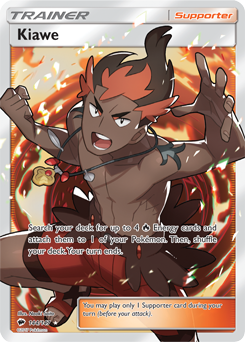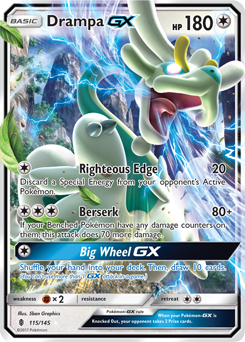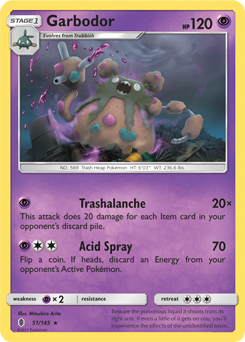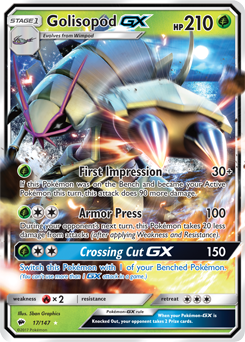A Case Study in Deckbuilding — Ho-Oh-GX / Kiawe in Standard

Hi PokeBeach readers, I’m excited to be back with another article for you! I’m going to try to approach something more abstract than my typical article in this one, going into how I decide on what deck to play for an event and how I build it to address the metagame. For any newer deck builder, this will be a method that you can apply to any format you may want to build for. For more experienced deck builders, this will be another approach you can consider, and hopefully I can provide you with something new to add to your own approach.
Toward the end of the article, I’ll give the Ho-Oh-GX / Kiawe build I’m currently testing, giving you an idea of what this kind of approach can produce. As it’s still early in the testing cycle, I would consider it somewhat experimental, but I will give updates on changes in the comments!
Step 0.5: Inspiration
I’m not totally sure you can call this a step, which is why it’s listed as 0.5. That said, this is a very important part of building a deck. Typically, my source of inspiration for a deck comes from one of two things:
- There is a card or combination of cards that I think could be extremely powerful. This is most common around the release of new sets, but it also sometimes happens after seeing a new deck or innovation by someone else. A deck I built from this kind of inspiration was the Golisopod-GX / Lurantis deck I last wrote about. Seeing two of the Top 8 Golisopod-GX / Zoroark-GX lists playing Lurantis led me to test their new version. While testing it, I was surprised by the crazy damage potential of Lurantis. I decided to try a deck that focused solely on abusing that damage and it worked quite well!
- There is a common weakness or set of weaknesses in the format. This can happen at any time, but it is most common when the format has just a few top decks. A deck that I built from this source of inspiration was Gardevoir-GX in Expanded. I saw that the format had a significant amount of trouble dealing with Gardevoir’s massive HP and damage, so I teched it for the rough matchups and ran with it. At Fort Wayne, Jac Carter ended up making Top 8 while I made Top 64 and the deck gained a significant amount of traction around the community from there.
For this article, I will be using a combination of both, but I will focus much more heavily on the latter.

An important note is that the latter approach is more formulaic than the first. It can also be applied to existing decks (as it will be in this article) to gain an edge on the metagame. Top players approach deck building this way all the time, and it’s where you see many of the most successful innovations come from. A very recent example of a top player building a deck to take advantage of weaknesses in the format is Igor Costa’s first place Drampa-GX / Garbodor from Costa Mesa. He and his testing group identified a heavy reliance on Abilities, Sky Field, and Special Energy among top decks, and they built a deck to hit each of these angles.
There are some very important “do nots” when building a deck, too. I want to address three specifically that I see all the time. While these are often issues with new players, I can name several instances of high level players doing this as well meaning you do not magically “age out” of these habits.
- Do not build a deck strictly in an effort to be unique or different. There is no merit to playing a deck that is different from the top decks of the metagame if its matchups are strictly worse than those decks. This doesn’t mean to avoid playing or building unique decks by any means! It simply means to have a deliberate reason for building the deck other than just being different.
- There is another that is more of a “do not” than anything, and that is to accept that your deck will have some bad matchups. With a very rare set of exceptions, it is impossible to build a deck that beats everything and aiming to do so is a fool’s errand. If you truly believe that you have found such a deck, it is imperative to test it a great deal and be very realistic about reasons for losing games. Did you really hit the one game in ten that your deck loses a matchup, or is the matchup not as favorable as you believed? Does your deck suffer from consistency issues? These are questions that you should be asking yourself throughout the testing process.
- Accepting the flaws of your deck is critical to improving it. It is incredibly easy to write off or justify losses as bad luck. I see players do this all the time across all levels of play, and it routinely prevents them from achieving finishes that represent their full potential. I have been guilty of this many times myself. One way of avoiding this is to record your wins and losses with a short note on why you won or lost. In your notes, you must not use the word “luck” at all. If you did not set up, simply write “I did not set up” and move on. If your opponent drew particularly well, make specific note of what cards they played that had in impact. When reviewing your notes, you can look back and determine whether you really got unlucky by the presence or absence of trends. If there is a trend of not setting up or losing a matchup due to “poor draws” or your opponent “getting everything they needed,” this indicates that the deck may have an unidentified flaw. If there is a single game that does not play out as expected in a sample of five or ten, you can reasonably say that you got unlucky. This note taking habit can be used productively as you progress in your deckbuilding as well to help you identify potential changes and problems that are only visible over large samples.
With these tips in mind, we’ll now move into the “formula” of building a deck to take advantage of weaknesses in the metagame.
Step 1: Identifying the Top Decks in the Metagame
The first and commonly most important step to building a deck is to identify the decks that you aim to beat. Not giving this step enough time can result in a deck built to counter matchups that you only see three in nine rounds, leaving you at the mercy of the other six. Fortunately, we now have a wealth of information to give you an accurate depiction of the metagame. In addition, article sites (like this one!) can do an excellent job of keeping you ahead of the metagame moving forward meaning you’re not strictly reliant on past results.

I’ve done a pretty significant amount of work in this area over the last couple weeks, and the decks that I would expect to play against at any event are Zoroark-GX variants and Buzzwole-GX variants. Decks that I would not be surprised to see are non-Buzzwole-GX Garbodor variants, Fire variants, and Vikavolt / Tapu Bulu-GX. Fringe decks are Magnezone, Glaceon-GX Variants, and Greninja. At the moment, I wouldn’t worry about any matchups outside of these due to how unlikely you are to play them.
We can break these decks down further, expanding on all possible variants of each. A list of these variants looks like this:
Zoroark-GX Variants
- Zoroark-GX / Golisopod-GX
- Zoroark-GX / Weavile
- Zoroark-GX / Garbodor
- Zoroark-GX / Lycanroc-GX
- Zoroark-GX / Gardevoir-GX
Buzzwole-GX Variants
- Buzzwole-GX / Lycanroc-GX
- Buzzwole-GX / Garbodor
Non-Buzzwole Garbodor Variants
- Espeon-GX / Garbodor
- Drampa-GX / Garbodor
- Registeel / Celesteela-GX / Dusk Mane Necrozma-GX / Garbodor
- Golisopod-GX / Garbodor
Fire Variants
- Ho-Oh-GX / Kiawe
- Volcanion-EX
Glaceon Variants
- Glaceon-GX / Zoroark-GX
- Glaceon-GX / Garbodor

With these distinctions made, we now need to rank the decks in exact order of expected popularity. This is the part that varies most from player to player, but my expectations go like this:
- 1. Golisopod-GX / Zoroark-GX
- 2. Buzzwole-GX / Lycanroc-GX
- 3. Buzzwole-GX / Garbodor
- 4. Zoroark-GX / Lycanroc-GX
- 5. Zoroark-GX / Weavile
- 6. Volcanion-EX
- 7. Espeon-GX / Garbodor
- 8. Vikavolt / Tapu Bulu-GX
- 9. Ho-Oh-GX / Kiawe
- 10. Zoroark-GX / Garbodor
All other decks represent a small enough portion of the metagame that I do not consider them worth worrying about for larger events. Local metagames vary wildly, so you’ll have to plan accordingly there. This list, however, is geared toward the large-scale metagame for Charlotte Regionals.
I created this list by using a variety of sources. The first was a metric of all the results from Collinsville regionals. The second was a large number of smaller tournament results since then. The third is overall community hype behind the decks (this one is of much lower weight than the others). From this, I determined what I thought would be most common across the field.
In general, you should not worry about more than ten decks. In doing so, you can muddle the core of your deck with techs that end up useless. In addition to this, it is very important to remember how each of these decks are prioritized and prepare for them accordingly. Golisopod-GX / Zoroark-GX and Ho-Oh-GX / Kiawe are both on the list, but you would be foolish to take a loss to Golisopod-GX / Zoroark-GX in favor of buffing out your Ho-Oh-GX / Kiawe matchup. This can shift somewhat depending on the severity of your poor matchups and effectiveness of techs, but don’t let that totally upset your list priority.
This concludes the public portion of this article.
If you'd like to continue reading, consider purchasing a PokeBeach premium membership! If you're not completely satisfied with your membership, you can request a full refund within 30 days.
Each week we post high-quality content from some of the game's top players. Our article program isn't a corporate operation, advertising front, or for-profit business. We set our prices so that we can pay the game's top players to write the best content for our subscribers. Each article topic is carefully selected, goes through multiple drafts, and is touched up by our editors. We take great pride in our program!

